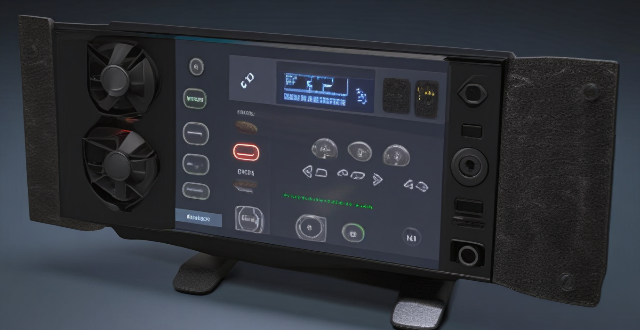The electronic climate control system in cars is an advanced feature that utilizes sensors, microprocessors, and electronic controls to maintain precise temperature management inside the passenger cabin. Core components include temperature sensors, microprocessors, a control unit, and ventilation and air conditioning units. The system operates by taking user input, reading sensor data, processing it, making adjustments, and stabilizing the output. Advanced features include dual-zone control, auto mode, voice command, and smartphone app control. Benefits of electronic climate control include precision, convenience, comfort, and energy efficiency. Overall, this system provides a seamless and comfortable driving experience by adapting to various environmental factors and personal preferences with ease.

Electronic Climate Control Systems in Cars
How it Operates
Overview of the System
The electronic climate control system, often referred to simply as "climate control," is a feature in modern vehicles that allows for precise temperature management inside the passenger cabin. Unlike traditional manual air conditioning systems that rely on dials and switches, electronic climate control uses advanced sensors, microprocessors, and electronic controls to automatically maintain the desired temperature.
Core Components
- Temperature Sensors: These are strategically placed inside the vehicle to monitor the current temperature.
- Microprocessors: The brains of the system, which analyze data from sensors and adjust the output accordingly.
- Control Unit: This interfaces with the user inputs and the microprocessors to regulate the system's operation.
- Ventilation and Air Conditioning Units: Includes fans, air ducts, heaters, and air conditioning compressors.
Operating Mechanism
1. User Input: Drivers set their desired temperature using buttons or touchscreens. They can also choose other options like fan speed, air direction, and recirculation.
2. Sensor Readings: Internal and external temperature sensors continuously feed data to the microprocessors.
3. Data Processing: Microprocessors compare the desired temperature with the current readings from the sensors.
4. Adjustment and Response: Based on the data, the system will adjust the flow of hot and cold air through blend doors, fan speed, and potentially activate the air conditioning or heating elements as needed.
5. Output Stabilization: Once the target temperature is reached, the system maintains it by making minor adjustments as necessary, responding dynamically to changes such as sunlight exposure, passenger volume, and outside temperature fluctuations.
Advanced Features
- Dual-Zone Control: Allows the driver and front passenger to set different temperatures.
- Auto Mode: The system automatically selects between heating and cooling based on the current conditions.
- Voice Command: In some vehicles, climate control can be operated via voice commands.
- Smartphone App Control: Some vehicles offer remote start and pre-conditioning of the interior through an app.
Benefits of Electronic Climate Control
- Precision: Offers precise temperature control compared to manual systems.
- Convenience: Easy to use interfaces with intuitive controls.
- Comfort: Maintains consistent comfort levels regardless of external conditions.
- Energy Efficiency: Can be more energy efficient than older manual systems.
Conclusion
Electronic climate control systems have revolutionized the way drivers and passengers experience comfort while on the road. With automated sensors and intelligent processing, these systems provide a seamless and comfortable driving experience, adapting to various environmental factors and personal preferences with ease.